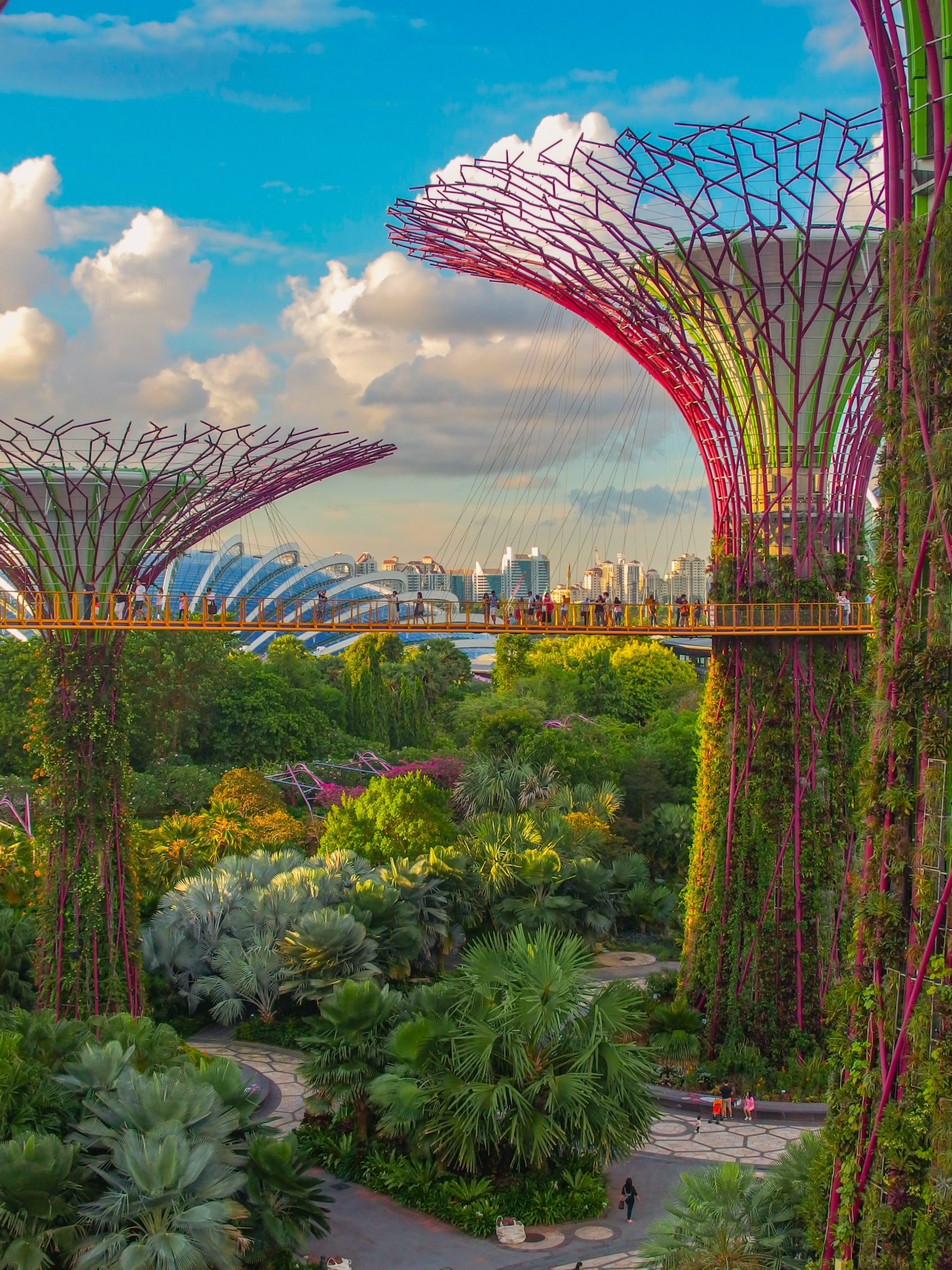Being closer to nature has been shown to have a positive effect on human health, showing that we still have a deep, intrinsic connection with the Earth despite the growing distance between us and the natural world. This phenomenon is known as biophilia and may be the future of sustainable cities.
For all plant parents, outdoor enthusiasts, gardeners, and other nature-loving people, the concept of biophilia might explain why you are drawn to these passions. Biophilia, a term popularized by conservationist Edward O. Wilson, is the idea that humans have an affinity for life and a tendency to seek connections with nature. This means that humans try to incorporate nature into our daily lives as much as possible.
Hints of biophilia can be seen everywhere: fountains that mimic the sound of streams, large windows and skylights that increase natural light indoors, and indoor plants that freshen up the room. Since we spend up to 90 percent of our lives indoors, it is important that we incorporate natural elements into our buildings to fulfill the intrinsic need to be close to nature. A design strategy, called biophilic design, connects people with nature through our built environment.
Biophilic design has been used by interior designers to create lively, fresh, and homey atmospheres in indoor environments for years, but what if we could expand upon this thinking? What if we built entire cities based on biophilic design principles?
Although cities cover only 1% of the world’s land surface area, about 85% of the world’s population now lives in these urban centers. With cities being a hub of human life, they should be designed to ensure human health, environmental sustainability, and social equity.
Timothy Beatley, a professor and researcher at University of Virginia, is an expert in biophilic design. In his book, Biophilic Cities: Integrating Nature Into Urban Design and Planning, he describes his vision for incorporating biophilia into future cities.
“A biophilic city is a city abundant with nature, a city that looks for opportunities to repair and restore and creatively insert nature wherever it can,” Beatley writes. “It is an outdoor city, a physically active city, in which residents spend time enjoying the biological magic and wonder around them. In biophilic cities, residents care about nature and work on its behalf locally and globally.”
Some places around the world have already begun building their cities with biophilic design principles in mind. One of the most impressive biophilic cities is in the island city-state of Singapore. They are so committed to biophilia that the city’s motto is now “Singapore—City in a Garden.” Singapore has an extensive network of nature trails and green spaces for its residents to enjoy throughout the city. They also incorporate nature into vertical spaces such as apartments, office buildings, and hotels with the use of plants to create green roofs and hanging gardens.

Biophilic design in cities, similar to the idea of urban green spaces, has been shown to have many environmental and social benefits. An abundance of plant life throughout the city increases resilience to natural disasters, reduces the urban heat island effect, and improves air quality. Biophilic cities provide areas for its residents to connect with their community and their neighbors through nature.
Interestingly, biophilic design is beneficial to more than just the environment—it has been scientifically proven to improve cognitive functionality, psychological well-being, and physical health. Some of the many benefits of biophilic design include lowered blood pressure and heart rate, lowered stress levels, increased focus and engagement, increased happiness and positive attitude, increased concentration, improved circadian system function, and reduced boredom and fatigue.
“Research shows the remarkable ways in which contact with nature can make us happier and healthier as well as contribute to meaningful urban lives,” says Beatley in an article he wrote about biophilia and health. “… a walk through a forest or greenspace has discernible mental health benefits… and is a significant antidote to long-term chronic stress experienced by many urbanites. Studies show that in the presence of nature, humans are more likely to be generous and cooperative as well as to think longer term. The experience of nature helps people live in ways that recognize the claims of others and the larger world. In short, nature helps make us better human beings and fosters the qualities that will be essential to resilience, sustainability, and healthy social ecologies.”
As old cities continue to grow and new cities are built, we now have a great opportunity to change the urban design strategies that currently predominate the system. We can infuse our urban areas with nature for the benefit of our health, the environment, and our communities. Biophilic design will bridge the gap that currently exists between humans and nature and help create cities that are socially and environmentally sustainable for generations to come.
Keep up with all of Green Living‘s original content online
and on social media.





